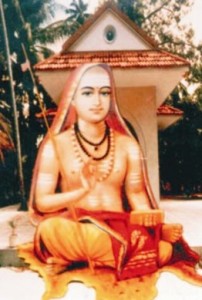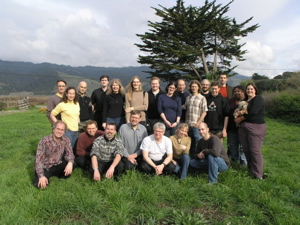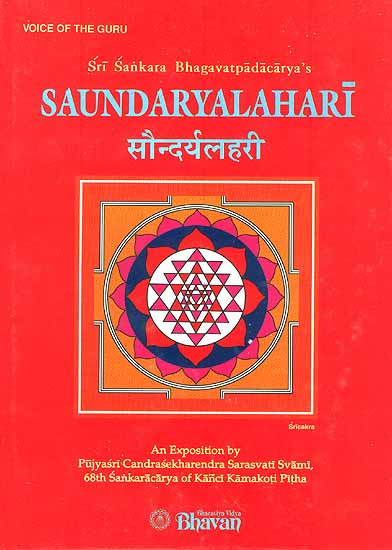SRI ADI SANKARA, Yoga, Books, Arts, Studies

> KAMAKOTI PEETHAM (founded pers. by Sri Sankara) <
> SRI SANKARA UNIVERSITY OF SANSKRIT <
> The Biography by Swami SIVANANDA <
> BHAGAVAD-GITA, commentary of Sri Sankaracharya (1901) <
> KAMAKOTI Go Green Solar Power Project <
Adi Shankara ( DevanÄ�garÄ�: आदि शङ्कर, Ä�di Śaṅkara, pronounced [aːdi ɕaŋkərə]); (788 CE – 820 CE), also known as Śaṅkara BhagavatpÄ�dÄ�cÄ�rya and Ä�di ŚaṅkarÄ�cÄ�rya, was an Indian philosopher who consolidated the doctrine of Advaita Vedanta, a sub-school of Vedanta. His teachings are based on the unity of the soul and Brahman, in which Brahman is viewed as without attributes. He hailed from Kalady of present day Kerala. Shankara travelled across India and other parts of South Asia to propagate his philosophy through discourses and debates with other thinkers. He founded four mathas („monasteries“), which helped in the historical development, revival and spread of Advaita Vedanta. Adi Shankara is believed to be the organizer of the Dashanami monastic order and the founder of the Shanmata tradition of worship.
His works in Sanskrit, all of which are extant today, concern themselves with establishing the doctrine of Advaita (Nondualism). He also established the importance of monastic life as sanctioned in the Upanishads and Brahma Sutra, in a time when the Mimamsa school established strict ritualism and ridiculed monasticism. Shankara relied entirely on the Upanishads for reference concerning Brahman and wrote copious commentaries on the Vedic Canon (Brahma Sutra, Principal Upanishads and Bhagavadgita) in support of his thesis.
The main opponent in his work is the Mimamsa school of thought, though he also offers some arguments against the views of some other schools like Samkhya and certain schools of BUDDHISM that he was familiar with. Read More: > HERE <
Scholastische Phase des Yoga
Diese Phase beginnt mit Shankaracharya (788-820 n. Chr.), der den Vedanta systematisierte und die besten Teile von Samkhya, Yoga und Buddhismus in den Vedanta integrierte. Nach ihm kamen andere Lehrer, die das Prasthana-Trayam anders verstanden, und konkurrierende Vedanta-Schulen gründeten. Advaita-Vedanta – diese von Shankara vertretene Auslegung sieht alle wahrgenommenen Unterschiede der phänomenalen Welt als unwirklich an. Alles was existiert ist nichts anderes als Brahman; doch Brahman hat keine Teile oder Unterschiede in sich. Die wahrgenommenen Unterschiede sind wie eine Fata Morgana. Mehr Lesen/Read More: > Here <
Adi Sankaracharya’s Soundarya Lahari, Translated by P. R. Ramachander: Introduction: Soundarya Lahari meaning waves of beauty consists of two parts viz. Ananda Lahari meaning waves of happiness (first 41 stanzas) and Soundarya Lahari(the next 59 stanzas). It is believed that Lord Ganesha himself has etched the Ananda Lahari on Mount Meru(Some people believe that Sage Pushpa Dhantha did the etching).
It was read from there by Sage Gouda Pada who taught it to Adhi Sankara. Adhi Sankara himself added the rest of the 59 stanzas and completed it.
These 100 stanzas are supposed to be the foremost among Manthra literature. It is also believed that by Making suitable Yanthras ( in west also known as „mandalas…“) and reciting particular stanzas and worshipping the yantras almost anything can be obtained in the world .
- Download at VEDANTA BHERI : >HERE <
- HYMNS ON SANKARA at bhagavadgitausa: >HERE<
- A new light on Adi Sankara, : > HINDU ON NET <,
- HINDU ON NET: > Soundarya Lahari chanting in Bangalore <
- Sankara im Deutschen > Kirchen Lexikon <
There are more than 36 commentries to Soundarya Lahari written in Sanskrit itself. Of them the most famous is that written by Lakshmi Dhara alias Lalla, His commentary is used to understand the meaning of the different verses. Though there are large number of translations and commentaries of Soundraya Lahari available this is perhaps the first time an attempt is made by a mere novice to translate them in to English verse. The aim is to bring to the notice of the devotes who know English better than other languages , the majesty of the medium of worship called >Soundarya Lahari<. A transliteration in roman script is also given. May all those who read this be drenched forever by this “Wave of happiness”.

The Internet Archive San Francisco:
The Internet Archive is a 501(c)(3) non-profit that was founded to build an Internet library. Its purposes include offering permanent access for researchers, historians, scholars, people with disabilities, and the general public to historical collections that exist in digital format. Founded in 1996 and located in San Francisco, the Archive has been receiving data donations from Alexa Internet and others. In late 1999, the organization started to grow to include more well-rounded collections.
Now the Internet Archive includes texts, audio, moving images, and software as well as archived web pages in our collections, and is working to provide specialized services relating to training, education, or adaptive reading or information access needs of blind or other persons with disabilities.
Extraordinary Personalities Reflect On The Bhagavad-Gita: > HERE <
Albert Einstein, Mahatma Gandhi, Dr. Albert Schweizer, Aurobindo, Carl Jung, Prime Minister Nehru, Herman Hesse, Vivekananda, Ralph Waldo Emerson, Paramahamsa Yogananda, Rudolph Steiner, Adi Shankara, Aldous Huxley, Ramanuja, Bhaktisiddhanta Saraswati Srila Prabhupada, Baladeva Vidyabhusana, Madhvacarya, and Sri Caitanya Mahaprabhu.
Bhaja Govindam is a very popular 8th century Hindu devotional composition in Sanskrit composed by Adi Shankaracharya. This work of Adi Shankara underscores the view that devotion to God, Govinda, is a vastly important part of general spirituality. This work is generally considered a good summary of Advaita Vedanta.
It is said that Shankara was walking along a street in Varanasi one day, accompanied by his disciples. He heard an old scholar teaching his grammatical rules. Taking pity on him, he went up and advised him not to waste his time on grammar at his age but to turn his mind to God in worship and adoration. The Hymn to Govinda was composed on this occasion. Besides the refrain of the song beginning with the words „Bhaja Govindam“, Shankara is said to have sung twelve verses, hence the hymn bears the title „Dvadasamanjarika-Stotra“ (A hymn which is a bunch of twelve verse-blossoms). The fourteen disciples who were with the Master then are believed to have added one verse each. These fourteen verses are together called „Chaturdasa-manjarika-Stotra“ (A hymn which is a bunch of fourteen verse-blossoms).
The refrain „Bhaja Govindam“ which defines the composition and gives it its name invokes the almighty in the aspect of Vishnu; it is therefore very popular not only with Sri Adi Shankaracharya’s immediate followers, the Smarthas, but also with Vaishnavas and others. There is a story attached to the composition of this Hymn. Please Note: Being a lady > M.S.Subbalakshmi < omitted few verse which are not included in this application.
LORD SIVA AND HIS WORSHIP BY SRI SWAMI SIVANANDA:
One will develop love and devotion for Lord Siva if he is freed from egoism. Chariyai, Kiriyai, Yoga and Jnana are the four Sadhanas or steps to kill egoism and attain Lord Siva.
Chariyai: The worship of the all-pervading, eternal Supreme Being through external forms, is called Chariyai. The requisite initiation for this, is Samaya Diksha. Erecting temples, cleaning them, making garlands of flowers, singing Lord’s praises, burning lamps in the temples, making flower gardens constitute Chariyai. Tamil Lexicon: Chariyai = சரியை: (Šaiva.) First of the four-fold means of attaining salvation, which consists in worshipping God-in-form in a temple.
Kiriyai is to perform Puja, Archanas. The worship of the cosmic form of the Eternal Ruler of the universe externally and internally, is called Kiriyai. For Kiriyai and Yoga, the requisite initiation is called Visesha Diksha. Tamil Lexicon: கிரியை:
-
Act, action, deed; செய்கை.
-
(Šaiva.) Second of the four-fold means of attaining salvation, which consists in worshipping Šiva with rites and ceremonies prescribed in the Ä�gamas.
Yoga is restraint of the senses and contemplation on the internal light. The internal worship of Him as formless, is called Yoga. For Kiriyai and Yoga, the requisite initiation is called Visesha Diksha. Tamil Lexicon: Yogam = யோகம் = Path of yoga which consists in the mental worship of Šiva in His subtler Form.
Jnana is to understand the true significance of Pati, Pasu, Pasa and to become one with Siva by constant meditation on Him after removing the three Malas, viz., Anava (egoism), Karma (action) and Maya (illusion). The direct realisation of Lord Siva through Jnana Guru, is called Jnana. The initiation that leads to it, is called Nirvana Diksha.
Tamil Lexicon: Jnanam = ஞானம். Path of wisdom which consists in the realization of God as transcending form.

Sri Sankara Bhagavatpadacarya’s Saundaryalahari: > Exotic India Art <
Translated Text of the Stotram is from :
http://www.chinmaya-chicago.org/BV/Gu…
http://www.vmission.org.in/files/pdf/…
The crossing of this Endless ocean of samsara is enabled
by the boat that is sincere devotion to Guru
Showing me the way to the valuable dominion of renunciation,
O dear Guru, I bow to thy holy sandals.
Like a full moon for the ocean of the Knowledge,
Like down pour of water to put out the fire of misfortunes,
Removing the various distresses of those who surrender to them,
O dear Gurudev, I bow to thy holy sandals.
Those who prostrate to the blessed padukas of their Guru
become possessors of great wealth
and overcome the curse of their poverty very quickly.
To such padukas my infinite prostrations.
Attracting us to the Lotus-like feet of our Guru,
removing all kinds of desires borne out of ignorance,
fulfilling all the desires of the disciple who bows humbly
To such padukas I humbly offer my obeisance.
Shining like a precious stone adorning the crown of a king
They stand out like a beautiful damsel in a river infested with crocodiles
They raise the devotees to the state of sovereign emperors,
To such padukas I humbly offer my obeisance.
Shining radiantly like the Sun, effacing the endless darkness of the disciples sins,
Like an eagle for the snake like three-fold pains of Samsara
like a conflagration of fire whose heat dries away the
ocean of ignorance
To such supreme padukas of my Gurudev, I humbly surrender.
They endow us with the glorious six qualities like Shama,
They vow to bless the intiated ones with the ability to go into samadhi.
Blessing the devotees with permanent devotion for the feet of Lord Vishnu(Ramaadhava)
To such divine padukas I offer my prayers.
Fulfilling all the wishes of the disciples,
Who are ever-available and dedicated for Sewa,
Awakening the sincere aspirants to the divine state of self realization,
Again and again prostrate to those Padukas of my Poojya Gurudev
They are like an eagle for all the serpants of desires,
Blessing us with the valuable treasure of discrimination and renunciation,
Granting us the knowledge to get instant liberation from the shackles of the life,
My prostrations to those holy Padukas of my Guru.
*
BRAHMA SUTRAS by Swami Sivananda
DHYANA SLOKASI prostrate myself before that Guru, the Existence, devoid of the three Gunas, beyond comprehension, the witness of all mental functions, changeless and pure, one and eternal, transcending the pairs of opposites, expansive like the sky, reachable through the sentences like ‚Thou art That‘, the Bliss of Brahman, the Giver of Supreme Happiness, the Mass of Absolute Wisdom.
He whom the Saivas worship as Siva; the Vedantins as the Absolute (Brahman); the Buddhists as Lord Buddha; the logicians, the experts in the theory of knowledge, as the Creator; those following the teachings of Jaina as the Arhat and the ritualists as the Sacrifice; may that Hari, the Lord of the three worlds, give you the desired object.
I worship the great Rishi Vyasa, who is called Krishna-dvaipayana, who is worshipped by gods, men and Asuras alike, who is the form of Vishnu, who is like the light of the rising sun to the darkness of the impurities of the age of Kali, who belongs to the family of Vasishtha, who divided the Vedas into different sections, who is the seed of Dharma, who wrote the Puranas, the Brahma Sutras, the Mahabharata and the Smriti.
I contemplate on Sankaracharya, who is seated in Padmasana, who is tranquil, who is established in self-restraint, whose glory is like that of the enemy of Cupid, who wears the sacred ashes shining on his forehead, whose smiling face resembles the blossomed lotus, who has lotus-like eyes, whose neck is conch-like, holding book in one hand and indicating Jnana-mudra (with another hand), who is adored by the foremost of gods, who gives boons to those who prostrate to him.
SRI SANKARDESIKASHTAM by HastamalakaO ocean of the nectar of illumined knowledge of the whole Sastras! Thou hast revealed the treasure of the meaning of the great Upanishads. I meditate on Thy pure Lotus Feet in my heart, O Sankara Desika (Acharya), be Thou my refuge.
O ocean of mercy! Protect me who am afflicted sorely by the pains of Samsara; Thou hast expounded the truth of the various schools of philosophy, O Sankara Desika, be Thou my refuge.
By Thee the humanity has attained happiness. Thou art endowed with a fine intellect reflecting Self-knowledge. I meditate on Thee who expounded the identity of Jiva and Isvara, O Sankara, be Thou my refuge.
„Thou art my God“ – thus thinking my mind became full of joy. Remove the great ocean of delusion in me, O Sankara, be Thou my refuge.
It is through various meritorious actions done by me for a long time that I have got in me a love for the vision of Thy Lotus Feet. Protect this humble self, O Sankara, be Thou my refuge.
For the redemption of mankind great souls like Thy Self move about from place to place. Thou seemst to me like the pure and resplendent sun, O Sankara, be Thou my refuge.
O best of Gurus, O Lord Siva! It is impossible for anyone to gauge Thy mental poise. O Protector of the refugees! O Repository of Knowledge! O Sankara, be Thou my refuge.
I have not been able to find any treasure worthy of possession except Thee, O Preceptor! Have mercy on me which is Thy natural quality, O Sankara, be Thou my refuge.
Comments are closed.